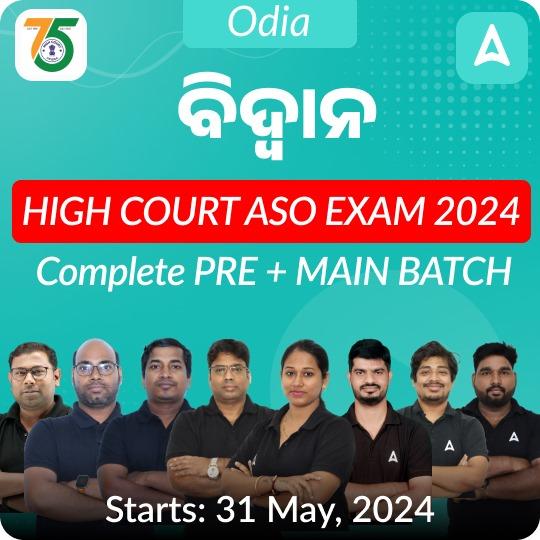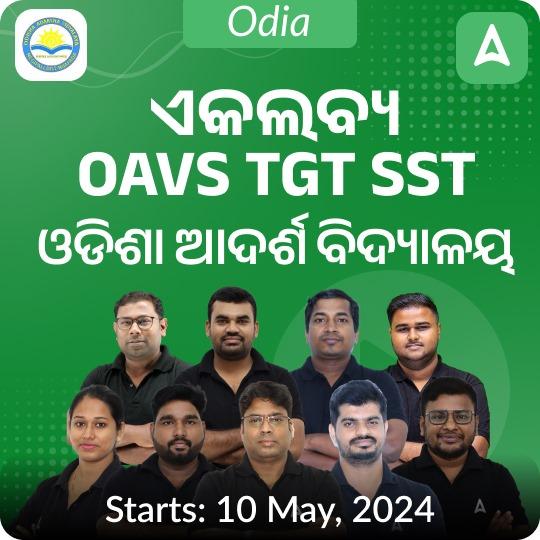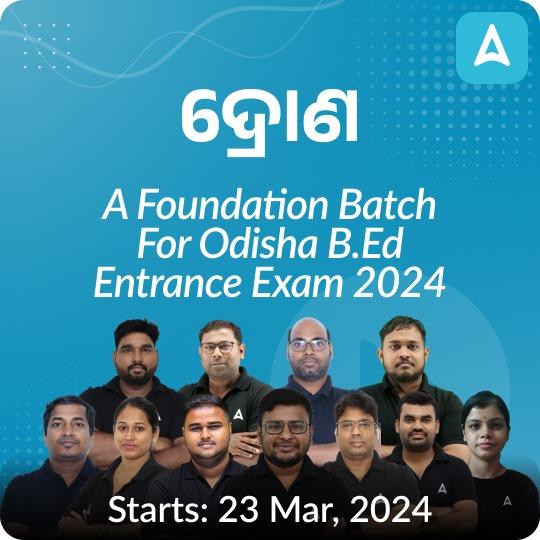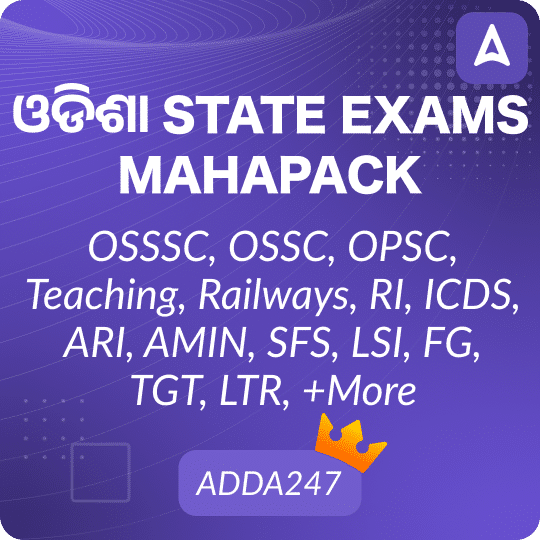“Indian Geography” acts a major role in various exams like OPSC, OSSC, OSSSC, and other common written exams. Having a great grip on Geography is very helpful at any stage not only in quiz tests or entrance exams. So, plan some time for answering the Geography MCQ Quiz questions prevailing here & enhance your GK skills on Indian Geography.
Top 30 Geography Quiz:
Q1. The river Godavari is often referred to as Vridha Ganga because
A. it is the older river of India
B. of its large size and extent among the peninsular rivers
C. there are a fairly large number of pilgrimage centers situated on its banks
D. its length is nearly the same as that of the river Ganges
S1. Ans. [B]of its large size and extent among the peninsular rivers
S2. The scarcity or crop failure of which of the following can cause a serious edible oil crisis in India?
A. coconut
B. Groundnut
C. Linseed
D. Mustard
S2. Ans. [B]Groundnut
Q3. The Pennines (Europe), Appalachians (America), and the Aravalli’s (India) are examples of
A. old mountains
B. young mountains
C. fold mountains
D. block mountains
S3. Ans. [A] old mountains
Q4. Which of the following factors are responsible for the present crisis in the jute industry in India?
I. The decline in the overseas market
II. Inadequately supply of raw jute
III. Stiff competition from synthetic packing materials
IV. Select the correct answer from the codes given below
A. I and II
B. I, II, and III
C. I and III
D. II and III
S4. Ans. [A]I and II
Q5. Which of the following factors are responsible for India’s failure to fully exploit the inland fisheries during the last five decades?
I. Silting and pollution of the inland water bodies
II. Deforestation in the catchment areas of the rivers
III. Lack of marketing facilities
IV. Select the correct answer from the codes given below
A. I, II, and III
B. I and II
C. I and III
D. II and III
S5. Ans. [C]I and III
Q6. The number of major ports in India is
A.5
B.8
C.13
D.15
S6. Ans. [C]13
Q7. Which of the following is a peninsular river of India?
A. Gandak
B. Kosi
C. Krishna
D. Sutlej
S7. Ans. [C]Krishna
Q8. Which of the following is the most important raw material for the generation of power in India?
A. Coal
B. Mineral Oil
C. Natural Gas
D. Uranium
S8. Ans. [A]Coal
Q9. When it is noon IST at Allahabad in India, the time at Greenwich, London, will be
A. midnight, GMT
B.1730 hours
C. 0630 hours
D. None of the above
S9. Ans. [C]0630 hours
Q10. Which country has the largest coastline?
A. USA
B. Australia
C. Canada
D. India
S10. Ans. [C]Canada
Q11. Which of the following types of soil are mostly confined to river basins and coastal plains of India?
A. Alluvial soils
B. Black soils
C. Laterite soils
D. Red soils
S11. Ans. [A]Alluvial soils
Q12. The two states of India, most richly endowed with iron ore, are
A. Bihar and Orissa
B. Madhya Pradesh and Orissa
C. Bihar and West Bengal
D. Madhya Pradesh and West Bengal
S12. Ans. [A]Bihar and Orissa
Q13. The most fertile region of India is
A. the Himalayas
B. the central Highlands
C. the Indo-Gangetic plain
D. peninsular plateau
S13. Ans [C]the Indo-Gangetic plain
Q14. Which of the following groups accounts for over 90 percent of India’s annual coal production?
A. Bihar, Orissa, and West Bengal
B. Bihar, Orissa, and Madhya Pradesh
C. Orissa, Madhya Pradesh, and Tamil Nadu
D. West Bengal, Madhya Pradesh, and Tamil Nadu
S14. Ans. [A]Bihar, Orissa, and West Bengal
Q15. The significant shifts in Indian agriculture during the green revolution include
A. non-food grains reported some spectacular progress and shift in the cropping pattern
B. major food grains, in the eastern regions productions decreased and in the northern states increased
C. both (a) and (b)
D. None of the above
S15. Ans. [C]Both (a) and (b)
Q16. Which of the following crops is regarded as a plantation crop?
A. Coconut
B. Cotton
C. Sugarcane
D. Rice
S16. Ans. [A]Coconut
Q17. Which of the following countries leads in the production of aluminum and its products in the world?
A. Australia
B. France
C. India
D. USA
S17. Ans. [D] USA
Q18. The natural region which holds the Indian subcontinent is
A. equatorial climate change region
B . hot desert
C. monsoon
D. mediterranean
S18. Ans. [C]monsoon
Q19. The most ideal region for the cultivation of cotton in India is
A. The Brahmaputra valley
B. The Indo-Gangetic valley
C. The Deccan plateau
D. The Rann of Kutch
S19. Ans. [C] the Deccan plateau
Q20. Which of the following are true with respect to the Indian Peninsular Plateau?
I. The southern plateau block is formed mainly of granite and gneiss
II. The Deccan lava plateau is an elevated tableland consisting of horizontally arranged lava sheets
III. The Malwa plateau dominates the Vindhyam scraps, forming the northern flank of the plateau
IV. The trough of the Narmada and Tapti are interposed between the Vindhyan and the Satpura ranges
A.I, II and III
B.I and II
C.I, II, III and IV
D.I, III and IV
S20. Ans. [C] I, II, III and IV
Q21. The percentage of India’s total population employed in agriculture is nearly
A.40%
B.50%
C.60%
D.70%
S21. Ans. [D] 70%
Q22. Which of the following important rivers of India does not originate from the Western Ghats?
A. Cauvery
B. the Godavari
C. Krishna
D. Mahanadi
S22. Ans. [D] Mahanadi
Q23. Which of the following areas or regions is most prone to earthquakes?
A. Ganga-Brahmaputra valley
B. Deccan plateau
C. Plains of northern India
D. Western ghats
S23. Ans. [A]Ganga-Brahmaputra valley
Q24. The proportion of forest to the total national geographical area of India as envisaged by National Forest Policy is
A.30.3%
B.33.3%
C.38.3%
D.42.3%
S24. Ans. [B]33.3%
Q25. Which of the following dams has generations of power more than irrigation as its main purpose?
A. Gandhi Sagar
B. Hirakud
C. Periyar
D. Tungabhadra
S25. Ans. A. Gandhi Sagar
Q26. Which of the following groups of rivers have their source of origin in Tibet?
A. Brahmaputra, Ganges and Sutlej
B. Ganges, Sutlej and Yamuna
C. Brahmaputra, Indus and Sutlej
D. Chenab, Ravi and Sutlej
S26. Ans. [C] Brahmaputra, Indus, and Sutlej
Q27. Which of the following measures are effective for soil conservation in India?
I. Avoiding crop rotation
II. Afforestation
III. Encouraging the use of chemical fertilizers
IV. Limiting shifting cultivation
A. I and II
B. II and IV
C. III and IV
D. I, II and III
S27. Ans. [B] II and IV
Q28. Which of the following crops needs maximum water per hectare?
A. Barley
B. Maize
C. Sugarcane
D. Wheat
S28. Ans. [C] Sugarcane
Q29. The watershed between India and Myanmar is formed by
A. the Naga hills
B. the Garo hills
C. Khasi hills
D. the Jaintia hills
S29. Ans. [A] the Naga hills
Q30. The originating in the Himalayan mountain complex consists of how many distinct drainage systems of the Indian Subcontinent?
A. Two
B. Three
C. Four
D. Five
S30. Ans. [B] Three
See More:-
Top 30 Polity Quiz – Click Here
Top 30 Economics Quiz – Click Here
Top 30 Odisha Static GK Quiz – Click Here
Top 30 Odia Grammar Quiz – Click Here












